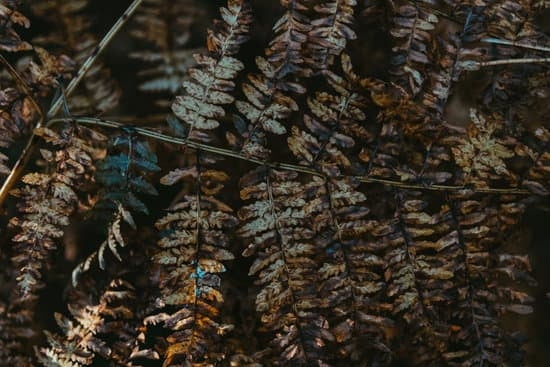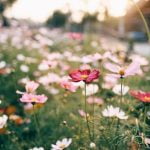Spring is a time of renewal and rejuvenation, making it the perfect season to start planning and planting your spring flower garden. From vibrant tulips to fragrant lilacs, the options for creating a colorful and inviting space are endless. In this article, we will explore ideas for spring flower gardens that will help you create a beautiful outdoor oasis right in your own backyard.
There are numerous benefits to starting a spring flower garden beyond just adding visual appeal to your outdoor space. Gardening can provide stress relief, increase physical activity, and boost mental well-being. Not to mention, tending to a garden can also attract beneficial pollinators like bees and butterflies, helping to support local ecosystems. With the right selection of flowers and thoughtful planning, your spring garden can become a therapeutic retreat for both you and the environment.
When selecting flowers for your spring garden, it is essential to consider factors such as sunlight exposure, soil quality, and climate conditions in your area. Whether you prefer traditional favorites like daffodils and hyacinths or want to experiment with unique varieties like ranunculus and peonies, choosing the right plants will ensure a successful and thriving garden. By carefully researching different species and their care requirements, you can create a diverse array of blooms that will bloom throughout the season.
Benefits of Starting a Spring Flower Garden
Spring flower gardens not only bring beauty and vibrancy to your outdoor spaces but also offer a myriad of benefits that make them a worthwhile endeavor for any gardening enthusiast. One of the key advantages of starting a spring flower garden is the opportunity to add color and life to your surroundings after the long, cold winter months. The sight of blooming flowers can uplift moods and create a welcoming atmosphere for both residents and visitors alike.
Health Benefits
In addition to aesthetics, spring flower gardens can also have positive effects on mental and physical health. Studies have shown that spending time in nature and engaging in gardening activities can reduce stress, lower blood pressure, and improve overall well-being. The act of nurturing plants and watching them grow can be a rewarding experience that promotes mindfulness and relaxation.
Environmental Impact
Another benefit of spring flower gardens is their positive impact on the environment. By planting native flowers and creating habitats for pollinators such as bees and butterflies, you are contributing to biodiversity conservation efforts. Flowers play a crucial role in supporting ecosystems by providing food sources for wildlife and promoting natural balance. Additionally, incorporating sustainable gardening practices like water conservation and organic pest control can help reduce your carbon footprint and promote eco-friendly habits.
Selecting the Right Flowers for Your Spring Garden
When it comes to creating a vibrant and colorful spring flower garden, one of the most important steps is selecting the right flowers for your space. With a wide variety of options available, it can be overwhelming to choose which flowers will thrive in your garden. One key consideration is determining the amount of sunlight your garden receives.
For areas with ample sunlight, consider planting sun-loving flowers such as daffodils, tulips, and roses. If your garden is shadier, opt for shade-tolerant blooms like hydrangeas, astilbe, or impatiens.
Another factor to keep in mind when selecting flowers for your spring garden is the climate in your region. It’s important to choose plants that are well-suited to the temperature and weather conditions in your area to ensure they thrive throughout the season. Researching which plants are native to your region can also help you select the best options for a successful garden.
In addition to considering sunlight and climate requirements, think about the colors and textures you want to incorporate into your spring flower garden. From bright and bold hues like hot pink and orange to soft pastels like lavender and peach, choosing a cohesive color scheme can create a visually stunning display.
Mixing different shapes and sizes of flowers can add interest and dimension to your garden beds. By carefully selecting a mix of flowers that complement each other, you can create a beautiful and harmonious spring garden that will bloom year after year.
Designing Your Spring Flower Garden Layout
When it comes to designing a spring flower garden layout, there are several key factors to consider in order to create a visually appealing and cohesive space. One of the first steps is to determine the size and shape of your garden area, as this will dictate how many flowers you can plant and how they will be arranged.
For smaller spaces, vertical gardening or raised beds can help maximize planting areas, while larger spaces offer more opportunities for intricate designs.
Another important consideration when planning your spring flower garden layout is the sunlight exposure in different parts of your garden. Some flowers thrive in full sun, while others prefer partial shade. By taking into account the natural light patterns in your garden, you can strategically place different types of flowers to ensure they receive the ideal amount of sunlight for healthy growth.
In addition to sunlight requirements, it is also essential to think about the color scheme and overall aesthetic you want to achieve in your spring flower garden. Whether you prefer a monochromatic look with varying shades of a single color or a vibrant mix of contrasting colors, selecting flowers that complement each other will enhance the visual impact of your garden. Consider using color wheel principles to create harmonious combinations that will make your spring flower garden truly stand out.
| Key Factors | Considerations |
|---|---|
| Garden Size and Shape | Determine planting areas and arrangement |
| Sunlight Exposure | Select flowers based on sunlight requirements |
| Color Scheme | Create harmonious combinations for visual impact |
By carefully planning and designing your spring flower garden layout with these considerations in mind, you can create a stunning outdoor space that blooms beautifully throughout the season. Experimenting with different layouts and arrangements can also help you discover new ways to showcase your favorite flowers and incorporate unique elements into your garden design. With proper care and maintenance, your spring flower garden will become a colorful sanctuary that brings joy and beauty to your outdoor living environment.
Tips for Planting and Maintaining Spring Flowers
Spring is the perfect time to start planning and planting your spring flower garden. With a vast array of vibrant blooms and fragrant blossoms available, there are endless possibilities to create a stunning display in your outdoor space. Whether you’re a seasoned gardener or a novice looking to try your hand at gardening, here are some tips for planting and maintaining your spring flowers:
- Choose the Right Location: Before planting your spring flowers, consider the amount of sunlight, soil type, and drainage in the area. Most spring flowers thrive in well-drained soil and receive at least 6-8 hours of sunlight per day.
- Prepare the Soil: Ensure that the soil is rich in organic matter by adding compost or fertilizer before planting. This will help provide essential nutrients for your flowers to grow strong and healthy.
- Watering Wisely: Be mindful of watering your spring flowers regularly, especially during dry spells. It’s important to keep the soil moist but not waterlogged to prevent root rot.
To maintain the beauty of your spring flower garden throughout the season, it’s essential to deadhead spent blooms regularly and remove any weeds that may compete for nutrients. Additionally, applying a layer of mulch around your plants can help conserve moisture, regulate soil temperature, and suppress weed growth. By following these tips for planting and maintaining your spring flowers, you can ensure a colorful and thriving garden that will be the envy of all who see it.
Incorporating Unique Elements in Your Spring Garden
When it comes to creating a stunning spring flower garden, incorporating unique elements can truly set your garden apart from the rest. Adding interest and personality to your garden not only enhances its visual appeal but also creates a space that reflects your own style and creativity. Here are some ideas to consider when looking to add unique elements to your spring garden:
One way to make your spring flower garden stand out is by incorporating artistic elements such as sculptures, birdbaths, or decorative planters. These additions can serve as focal points in your garden, drawing the eye and adding a touch of elegance or whimsy, depending on your preference. A strategically placed sculpture or water feature can create a sense of harmony and balance within the space.
Another idea for infusing uniqueness into your spring flower garden is by incorporating fragrant plants that not only add beauty but also tantalize the senses. Consider planting aromatic herbs like lavender or thyme, fragrant flowers like roses or jasmine, or flowering shrubs with pleasant scents like lilac or magnolia. The combination of visual beauty and delightful fragrances will elevate the sensory experience in your garden.
Additionally, consider adding functional elements to your spring flower garden, such as seating areas, pathways, or bird feeders. Creating spaces where you can relax and enjoy the beauty of your garden will enhance its overall appeal while providing practical benefits. Pathways made from natural materials like stone or gravel can guide visitors through the garden while also adding structure and texture to the landscape. Bird feeders attract wildlife and provide entertainment while promoting biodiversity in your outdoor space.
By incorporating unique elements like artistic features, fragrant plants, and functional accessories into your spring flower garden, you can create a one-of-a-kind outdoor oasis that reflects your personal style and enhances the natural beauty of the season. Let these ideas inspire you as you design and cultivate a stunning spring garden that will bring joy and tranquility to your outdoor space for years to come.
Seasonal Care and Maintenance of Spring Flower Gardens
As the season progresses, it is essential to stay on top of care and maintenance tasks to ensure your spring flower garden continues to flourish. One important aspect to consider is watering. Spring weather can be unpredictable, with periods of heavy rain followed by dry spells.
It’s crucial to monitor the moisture levels in your garden regularly and adjust your watering schedule accordingly. Overwatering can lead to root rot, while underwatering can cause the plants to wilt and die. Consider investing in a soaker hose or drip irrigation system for efficient watering.
In addition to watering, spring flower gardens also require regular fertilizing to promote healthy growth and vibrant blooms. Choose a fertilizer specifically formulated for flowering plants and follow the instructions on the packaging for best results. It’s recommended to fertilize your garden in early spring as soon as new growth appears, and then again every 4-6 weeks throughout the growing season. Be sure to water your plants before and after applying fertilizer to prevent burning their roots.
Another important aspect of caring for spring flower gardens is pest control. Keep an eye out for common garden pests such as aphids, snails, and slugs, which can damage your plants if left unchecked. Consider using natural pest control methods like introducing beneficial insects or handpicking pests off your plants.
Regularly inspecting your garden for signs of infestation will allow you to address any issues promptly and prevent them from spreading. By staying proactive in caring for your spring flower garden, you can enjoy a beautiful and thriving outdoor space throughout the season.
| Aspect | Tips |
|---|---|
| Watering | Monitor moisture levels regularly and adjust watering schedule accordingly. |
| Fertilizing | Choose a fertilizer for flowering plants; apply in early spring and every 4-6 weeks. |
| Pest Control | Keep watch for common pests; use natural methods like introducing beneficial insects. |
Creative Ideas for Spring Flower Garden Themes and Color Schemes
Spring is the perfect time to unleash your creativity and add a burst of color to your outdoor space with a stunning spring flower garden. When deciding on the theme and color scheme for your garden, consider your personal style, preferences, and the overall aesthetic you want to achieve. Here are some creative ideas to inspire you as you plan your spring flower garden:
Cottage Garden Charm
Create a cozy and inviting atmosphere in your spring flower garden by channeling the charm of a cottage garden. Opt for a mix of colorful blooms, such as roses, peonies, and daisies, along with climbing vines like clematis or honeysuckle. Incorporate vintage-inspired elements like rustic wooden furniture, old-fashioned birdhouses, and quaint stone pathways to enhance the cottage feel.
Tropical Paradise Vibes
Bring a touch of exotic beauty to your spring garden with a tropical paradise theme. Choose vibrant and bold flowers like hibiscus, bougainvillea, and bird of paradise to create an eye-catching display. Accessorize with tropical-inspired accents such as bamboo fencing, colorful ceramic planters, and lush palm trees or ferns to complete the island oasis look.
Monochromatic Elegance
For a sophisticated and elegant spring flower garden, consider sticking to a monochromatic color scheme. Select flowers in varying shades of one color – whether it’s all white for a classic look, soft pinks for a romantic feel, or vibrant purples for a regal touch. Add depth and interest by playing with different textures and heights within the same color family to create a cohesive and visually stunning display.
Whether you’re dreaming of a whimsical cottage garden retreat, an exotic tropical escape, or an elegant monochromatic masterpiece, there are endless possibilities when it comes to themes and color schemes for your spring flower garden. Let your imagination run wild as you design and cultivate your unique outdoor oasis that will bloom beautifully throughout the season.
Showcasing Success Stories of Spring Flower Gardens
Spring flower gardens can truly transform a backyard or outdoor space, adding vibrant colors and delightful scents that liven up any area. When it comes to showcasing success stories of spring flower gardens, there are numerous examples that demonstrate the beauty and creativity that can be achieved with thoughtful planning and care. Here are some inspiring stories of gardeners who have brought their visions to life:
- One homeowner in a suburban neighborhood decided to create a butterfly garden filled with native plants that attract pollinators. By selecting flowers such as coneflowers, milkweed, and black-eyed Susans, they were able to not only beautify their yard but also support local wildlife.
- Another gardener took inspiration from Japanese Zen gardens and created a peaceful oasis using elements like rocks, ornamental grasses, and cherry blossoms. The result was a tranquil space perfect for meditation and relaxation.
- A family transformed their front yard into a rainbow garden, planting rows of different colored flowers to create a vibrant display that brightened up the entire street. From red roses to purple irises, each section of the garden represented a different color of the rainbow.
These success stories showcase the endless possibilities when it comes to creating a spring flower garden. By incorporating unique themes, color schemes, and design elements, individuals can tailor their gardens to reflect their personal style and preferences. Whether you prefer a wildflower meadow or a structured formal garden, there are countless ideas for spring flower gardens that can help you bring your vision to life.
Conclusion and Final Tips for a Beautiful Spring Garden
In conclusion, creating a beautiful spring flower garden is not only a rewarding experience but also a fantastic way to enhance the beauty of your outdoor space. By carefully selecting the right flowers, designing a layout that suits your preferences, and incorporating unique elements such as garden ornaments or pathways, you can create a stunning garden that blooms with vibrant colors and fragrances throughout the season.
As you embark on your journey to create a spring flower garden, remember to consider the seasonal care and maintenance required to keep your garden flourishing. Regular watering, pruning, and fertilizing are essential tasks that will help your flowers thrive and bloom abundantly. Additionally, don’t forget to plan for any necessary pest control measures to protect your flowers from potential damage.
For those seeking inspiration for their spring flower gardens, consider exploring creative themes and color schemes that can elevate the overall aesthetic of your outdoor space. Whether you opt for a monochromatic theme with varying shades of one color or choose a vibrant mix of complementary hues, there are endless possibilities to showcase your creativity and individual style through your garden.
With dedication and thoughtful planning, you can create a stunning spring flower garden that will be admired by all who visit.
Frequently Asked Questions
How Do You Plan a Spring Flower Garden?
Planning a spring flower garden involves several key steps. First, consider the location and size of your garden. Choose a sunny spot with well-draining soil.
Next, decide on the flowers you want to plant, keeping in mind color schemes and blooming times. Research the specific needs of each flower, including sun exposure and watering requirements. Finally, create a planting schedule to ensure a continuous display of blooms throughout the season.
How Do You Make a Beautiful Spring Garden?
Creating a beautiful spring garden is all about careful planning and attention to detail. Start by selecting a variety of flowers that will bloom at different times, providing color and interest from early spring to late summer.
Incorporate elements like pathways, seating areas, and decorative accents to enhance the overall aesthetic of your garden. Regular maintenance such as weeding, watering, and deadheading will help keep your garden looking its best.
What Is the Easiest Flower to Grow in Spring?
When it comes to easy-to-grow spring flowers, one popular option is the daffodil. Daffodils are hardy plants that come in a range of sizes and colors, making them versatile for any garden setting.
They prefer well-drained soil and full or partial sun exposure, requiring minimal care once established. Additionally, daffodils tend to naturalize over time, meaning they will multiply and come back year after year with little effort on the gardener’s part.

Welcome to my gardening blog! I am passionate about plants and enjoy sharing my knowledge and experiences with others. In this blog, I will write about everything related to gardening, from tips on how to get started to updates on my own garden projects.





